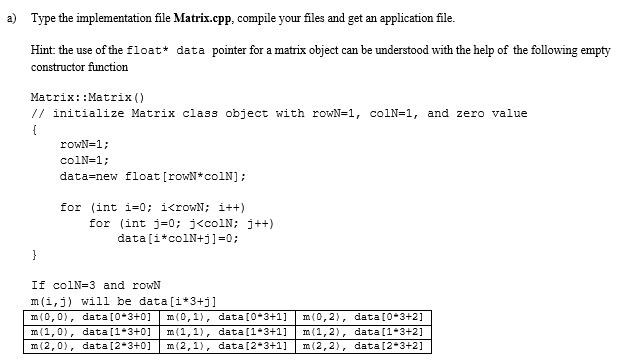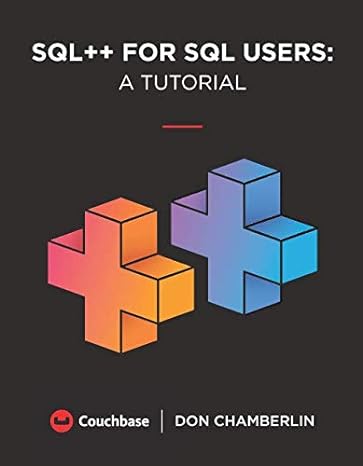Question
testMatrix.cpp: #include Matrix.h #include #include using namespace std; int main() { float arr1[]={1,2,3,4,5, 11,12,13,14,15, 21,22,23,24,25}; float arr2[]={9,8,7,6,5, 19,18,17,16,15, 29,28,27,26,25}; Matrix m1(3,5); Matrix m2(m1); Matrix m3(3,5,arr1);

testMatrix.cpp:
#include "Matrix.h" #include
using namespace std;
int main() { float arr1[]={1,2,3,4,5, 11,12,13,14,15, 21,22,23,24,25}; float arr2[]={9,8,7,6,5, 19,18,17,16,15, 29,28,27,26,25}; Matrix m1(3,5); Matrix m2(m1); Matrix m3(3,5,arr1); Matrix m4(3,5,arr2); //------------------- cout
cout
Matrix.h:
#include
#include
using namespace std;
#ifndef MATRIX_H
#define MATRIX_H
class Matrix
{
friend ostream& operator
public:
Matrix();
// initialize Matrix class object with rowN=1, colN=1, and zero value
Matrix(const int rN,const int cN );
// initialize Matrix class object with row number rN, col number cN and zero values
Matrix(const Matrix &srcMatrix );
// initialize Matrix class object with another Matrix class object
Matrix(const int rN, const int cN, const float *srcPtr);
// initialize Matrix class object with row number rN, col number cN and a pointer to an array
const float * getData()const;
// create a temp pointer and copy the array values which data pointer points,
// then returns temp.
int getRowN()const; // returns rowN
int getColN()const; // returns colN
void print()const; // prints the Matrix object in rowNxcolN form
Matrix transpose(); // takes the transpose of the matrix
Matrix operator+(const Matrix &rhsMatrix)const;
//+ operator which allows m1+m2 and returns a temp Matrix object
Matrix operator-(const Matrix &rhsMatrix)const;
//- operator which allows m1-m2 and returns a temp Matrix object
Matrix operator*(const Matrix &rhsMatrix)const;
//* operator which allows product of m1*m2
//(element-wise) and returns a temp Matrix object
float operator()(const int r,const int c)const;
//() operator which allows returning m1(r,c),
//m1(0,0) is on the first row, first col
Matrix& operator=(const Matrix &rhsMatrix);
//= operator which allows m1=m2 and returns this pointer of m1
Matrix& operator+=(const Matrix &rhsMatrix);
//+= operator which allows m1+=m2 and returns this pointer of m1
Matrix& operator-=(const Matrix &rhsMatrix);
//-= operator which allows m1-=m2 and returns this pointer of m1
Matrix& operator*=(const Matrix &rhsMatrix);
//*= operator which allows m1*=m2 (element-wise) and returns this pointer of m1
int operator==(const Matrix &rhsMatrix)const;
//== operator which returns 1 if (m1==m2)
int operator!=(const Matrix &rhsMatrix)const;
//== operator which returns 1 if (m1!=m2)
private:
//() operator which allows returning m1(r,c),
//m1(0,0) is on the first row,first col
int rowN, colN;
float* data;
// e.g: if pointer data points an array of [ 1, 2, 3, 4, 5, 6] and the rowN=3 and coln=2
// matrix is actually
// 1 2 3
// 4 5 6
};
#endif
a) Type the implementation file Matrix.cpp, compile your files and get an application file. Hint: the use of the float* data pointer for a matrix object can be understood with the help of the following empt constructor functionStep by Step Solution
There are 3 Steps involved in it
Step: 1

Get Instant Access to Expert-Tailored Solutions
See step-by-step solutions with expert insights and AI powered tools for academic success
Step: 2

Step: 3

Ace Your Homework with AI
Get the answers you need in no time with our AI-driven, step-by-step assistance
Get Started


